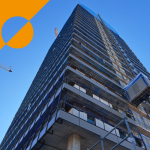
May at the Tower One
30 de June de 2025
Porta Diagonal: A Space for Health, Science, and Education
19 de August de 2025
May at the Tower One
30 de June de 2025
Porta Diagonal: A Space for Health, Science, and Education
19 de August de 2025Share
29 / 07 / 2025
Active Living: The Secret Behind Healthier Cities
At a time when physical and mental well-being have become a global necessity, urban environments face both the challenge and the responsibility of enabling an active, healthy lifestyle. More and more, we’re talking about healthy cities: those that encourage movement, reduce sedentary behaviour, and foster a stronger connection between people and their surroundings.
Why Active Living Is Key to Urban Health
According to the World Health Organisation (WHO), sedentary lifestyles are one of the leading global health risk factors, associated with increased rates of cardiovascular disease, type 2 diabetes, obesity, and mental health disorders. Encouraging daily movement—walking, cycling, exercising, or simply staying active at work—has proven benefits: it improves sleep quality, reduces stress, boosts the immune system, and increases life expectancy.But active living isn’t just about individual habits. The urban environment plays a crucial role.
The Urban Environment as a Promoter (or Barrier) of Active Living
The way our cities are designed has a direct impact on our physical activity levels. Car-centric streets, a lack of green spaces, or poorly maintained sidewalks are among the most common barriers. In contrast, environments that are designed with people at the center—prioritizing accessibility and sustainable transportation—are true enablers of an active and therefore healthier lifestyle. Increasingly, urban development projects are rising to meet this challenge, and Porta Diagonal is one of them.Porta Diagonal: A Place Designed to Move
Porta Diagonal has been envisioned from the ground up as a space where active living is not only possible but encouraged. Its urban design integrates sustainable mobility, green spaces, and a layout that invites spontaneous movement as part of everyday life:- Accessible pedestrian routes: the central pathway known as El Camino connects every part of the project—buildings, plazas, gardens, and services—through a winding route designed for walking, discovery, and interaction.
- Bike lanes and integration with the BiciVia network: the connection to the metropolitan cycling network promotes the use of bicycles as an efficient, healthy, and sustainable mode of transport.
- Green areas and high-quality public spaces: over 18,000 m² of green spaces open to the public, featuring shaded areas, native vegetation, and places to rest or enjoy outdoor sports.
- Proximity to Collserola Natural Park: the strategic location next to this vast green lung offers unique opportunities for walking, running, or reconnecting with nature—just steps away from the urban core.
- Offices, hotels, and coworking spaces with the option of working outdoors: a new way of understanding the professional environment, one that’s tied to well-being.
